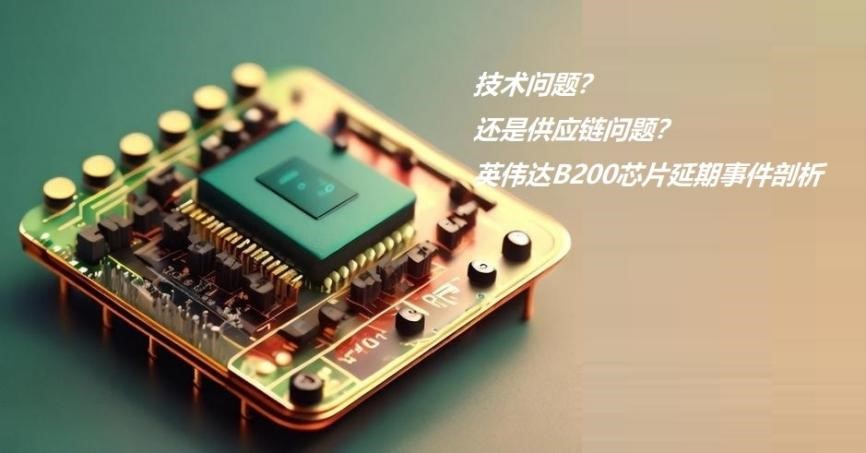Recently, the hot topic in the tech world can't escape the delay of NVIDIA's B200 chip. As the world's leading graphics processor manufacturer, NVIDIA's every move touches the nerves of the market. As soon as the news of the postponement of the B200 chip came out, it immediately triggered market concerns about the stability of the supply chain and questions about NVIDIA's technical strength.
Why Chips are Delay: Technical Challenges or Supply Chain Issues?
First, let's figure out the reasons for the delay of the B200 chip. According to JPMorgan's research report, the main problems are at the chip and package level (CoWoS-L), as well as board-level design and system-level issues. Specifically, the B100/B200 N4 chip (GB100 chip) has some design challenges, especially in the requirements of high performance and high power thresholds, it is particularly difficult to find two identical chips to put into the B200 CoWoS package.
In addition, the yield of CoWoS-L packaging is not high and unstable, according to JPMorgan Chase & Co., the current yield is only about 60%, which is far lower than the level of more than 90% of CoWoS-S. This has a direct impact on the yield and delivery time of chips.

Figure: Analysis of the NVIDIA B200 chip delay event
Nvidia's response: optimistic or evasive?
In the face of market doubts, Nvidia's response has been relatively conservative. They said demand for the Hopper chip is very strong, sample trials of the Blackwell chip have already begun extensively, and production is expected to increase in the second half of the year. However, Nvidia did not give a clear answer to the specific question of the extension.
Market Impact: Short-Term Volatility or Long-Term Trend?
Although Nvidia remains optimistic about the prospects for the B200 chip, the market's reaction has been mixed. On the one hand, analysts expect that due to the strong demand for Hopper chips, the delay of the B200 chip may not have a particularly large impact on Nvidia's revenue. On the other hand, tech giants, including Google's parent company Alphabet, Amazon, Microsoft and Facebook's parent Meta, have high hopes for the B200 chip, hoping to use it to boost their computing power.
According to reports, Meta has placed orders worth at least $10 billion, and Microsoft has recently increased the size of its orders. The order changes of these large customers will undoubtedly have an important impact on NVIDIA's performance.
Future Prospects: The Potential and Challenges of Blackwell Chips
Despite the delay, the market potential of Nvidia's Blackwell chips should not be underestimated. Blackwell-related GPU shipments are expected to reach more than 4.5 million units by 2025. Behind this number is NVIDIA's deep accumulation and continuous innovation in the field of AI and high-performance computing.
However, there are also challenges. Technical challenges, supply chain stability, and changes in market demand are all factors that may affect the future of Blackwell chips. Nvidia needed to strengthen its collaboration with supply chain partners and optimize production processes to respond to market uncertainties while ensuring technological leadership.
Conclusion
The postponement of Nvidia's B200 chip shows us the complexity and uncertainty of the technology manufacturing industry. As an industry leader, how NVIDIA responds to this challenge will not only be related to its own performance and development, but will also have a profound impact on the entire industry. Let's wait and see how NVIDIA uses the wisdom of technological innovation and supply chain management to resolve the crisis and meet the challenge.






